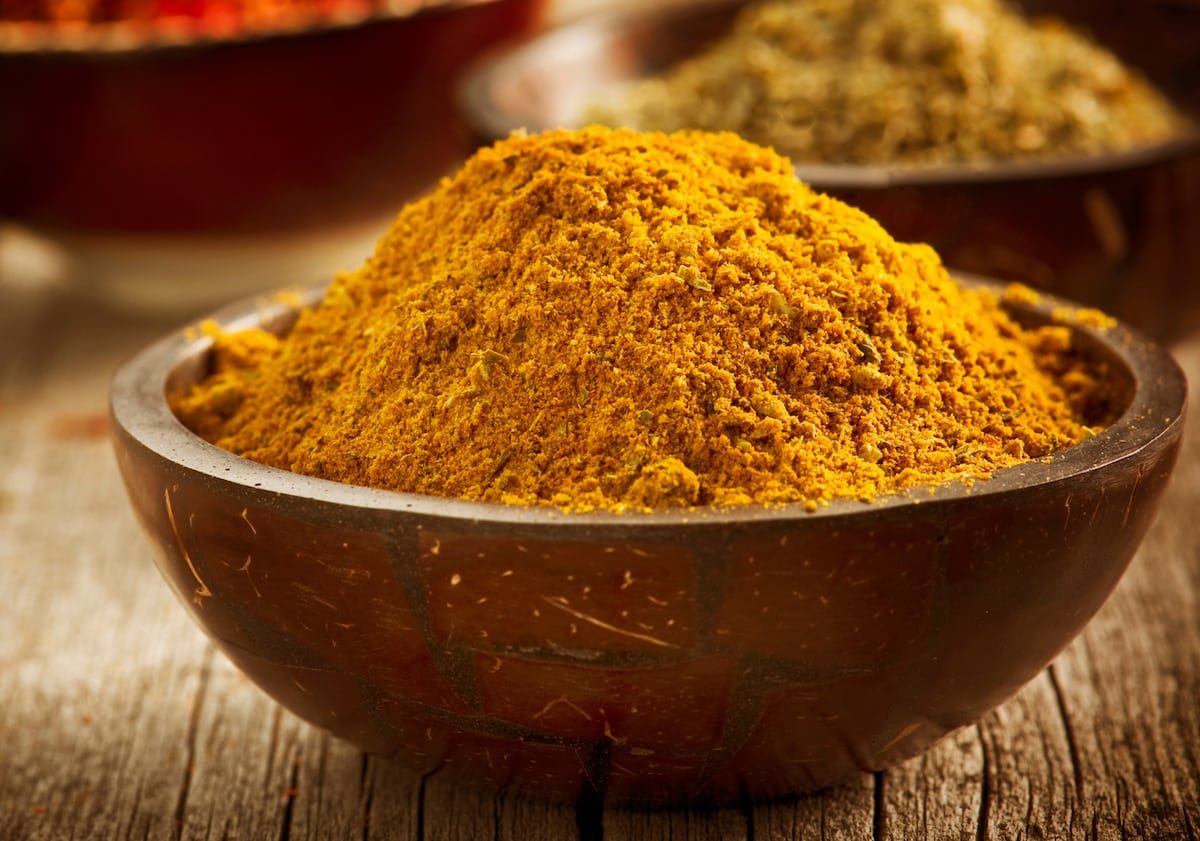RE-ENVISION: Curry powder
RE-ENVISION is an ongoing series of research memos produced by our associates at Appetite. We trace the cultural genealogies of food from around the world to challenge commonly held beliefs about origin and authenticity.
Curry powder is an ingredient commonly associated with India but its impact resonates far beyond the subcontinent.
It may come as a surprise that curry is not an Indian term at all. Portuguese sailors, who made landfall in the western state of Goa in 1497, named the spicy and thickened stews they encountered carel, a derivation of the Tamil word kari, which means spiced sauce.
When the British arrived in the 17th century, the word curry replaced the Portuguese carel.1 It was likely an attempt by soldiers in the British East India Company to replicate the dishes they encountered in several regions of India2 such as Madras, Bombay, and Calcutta during their time there in early eighteenth century.3
The ingredients of the curry powder may vary, but the following are consistent among all recipes: coriander, turmeric, ginger, black pepper, chillies, cumin, and fenugreek.4
Note that chillies have not always been a part of Indian food. They came to India with the Portuguese in the 16th century and quickly replaced black pepper to give spiciness to the food; it grew easily across the country unlike black pepper.5
Curry draws inspiration from the Indian masala, a spice mix that consists of both dry and wet ingredients. Because of the use of wet ingredients, it is often a paste than a powder.6 Masalas differ by region, but coriander, cumin, and chilies remain shared ingredients. It is no coincidence that the three spices are also the most common ingredients in curry powder. Other common ingredients include turmeric, black mustard seed, nigella, fennel, fenugreek, asafoetida, curry leaf, cinnamon, cloves, and cardamom.7
Spice prices fell in the late eighteenth century, and the British started trading a more lucrative commodity instead: opium.8 Nevertheless, they carried curry powder with them wherever they went. Between 1789 and 1867 the British established their Straits Settlements in Penang, Malacca, and Singapore to obtain trade routes to China.9 They also sent Indian workers to work in rubber and palm plantations in Malaysia.10
Through both channels, curry powder was introduced to Southeast Asia. Dishes such as Hainanese curry rice from Singapore11 and Thai yellow curry12 are results of these interactions.
Japanese curry (kare raisu), one of the country’s beloved dishes, did not exist until curry powder came to Japan in 1868 at the beginning of the Meiji Era when Japanese ports opened to international trade.13 It was popular in the military for its high protein content, and was introduced to Korea by Japanese soldiers during WWII.14
Curry powder also became a common ingredient in South African cuisine after the British took control of the region in the early nineteenth century. Bobotie, a Cape Malay dish which consists of minced meat and spices, originally included fresh spices which were subsequently replaced by curry powder.15
It took another century for curry powder to make its way to continental Europe. Scandinavian curried herring is believed to have originated after the introduction of British cookbooks and curry powder in the early twentieth century.16 A popular German street food, Currywurst, originated even later in 1949 as a result of a trade between a German woman named Herta Heuwer and a British soldier.17
The story of curry powder is the story of centuries of trade and colonialism. Its history is at times difficult, but it remains one of the most multicultural ingredients of the culinary world.
Annotated Bibliography
Achaya, K T. The Story of Our Food. Universities Press, 2003.
KT Achaya is a food scientist, nutritionist, food historian and oil scientist. He wrote extensively about the history and origins of Indian food. His works include A Historical Dictionary of Indian Food.
Collingham, Elizabeth M. Curry: A Tale of Cooks and Conquerors. Vintage, 2006.
Written by Elizabeth Collingham, a historian, Curry: A Tale of Cooks and Conquerors examines the origins of curry as a concept. This book gives an elaborate overview of the evolution of curry and its ingredients. Curry powder has an important place in this evolution as one of the key features of curries after eighteenth century
Maroney, Stephanie R. “‘To Make a Curry the India Way’: Tracking the Meaning of Curry Across Eighteenth-Century Communities.” Food and Foodways 19 (2011): 122–34.
Stephanie Maroney is a scholar of cultural studies and her specialty is in feminist theory. She is the author of numerous publications on food, nutrition, and the interaction between nutrition and feminist theory.
Sen, Coleen T. Curry: A Global History. Edited by Andrew F Smith. London: Reaktion Books, 2009.
Coleen Sen is an author specialising in Indian cuisine. In her book Curry: A Global History, Sen provides a detailed summary of the journey of curry as a concept. I found this book especially helpful in understanding the spread of curry powder from Britain in the nineteenth century.
Written by Ekin Balci.
Notes
1 Collingham, Elizabeth M. Curry: A Tale of Cooks and Conquerors. Vintage, 2006.
2 Maroney, Stephanie R. “‘To Make a Curry the India Way’: Tracking the Meaning of Curry Across Eighteenth-Century Communities.” Food and Foodways 19 (2011): 122–34.
3 Sen, Coleen T. Curry: A Global History. Edited by Andrew F Smith. London: Reaktion Books, 2009.
4 Ibid.
5 Achaya, K T. The Story of Our Food. Universities Press, 2003.
6 Source: https://www.silkroadgourmet.com/the-origins-of-curry-powder/
7 Ibid.
8 Source: https://thetakeout.com/what-we-know-as-curry-has-a-long-and-curious-history-1798252495
9 Ibid.
10 Sen, Coleen T. Curry: A Global History. Edited by Andrew F Smith. London: Reaktion Books, 2009.
11 Source: https://www.curryrice.sg/hainanese-curry-rice/
12 Sen, Coleen T. Curry: A Global History. Edited by Andrew F Smith. London: Reaktion Books, 2009.
13 Ibid.
14 Source: https://thetakeout.com/what-we-know-as-curry-has-a-long-and-curious-history-1798252495
15 Sen, Coleen T. Curry: A Global History. Edited by Andrew F Smith. London: Reaktion Books, 2009.
16 Source: https://www.thelocal.se/20190104/how-spices-have-connected-sweden-with-india-since-the-viking-age
17 Source: https://www.thelocal.de/20190905/currywurst-a-product-of-the-british

